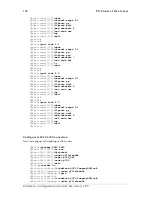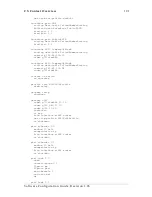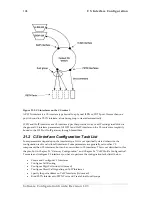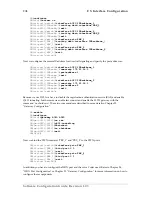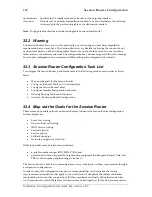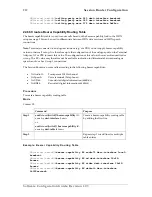
CS Interface Configuration
199
21.7 Specify the Port Address on VoIP interfaces
ISoIP and the Q.931 tunneling in H.323 can support ISDN services which use D-channel broadcast
messages, such as call back and call waiting services. These features are related to physical ports on
the remote gateway and not to a specific called party number.
In conventional voice circuits a D-channel message always reaches its destination, because the
destination is always connected directly with a wire to the switch (e.g PSTN). In VoIP networks a
directly hard wired connection does not exist. Therefore a virtual tunnel is specified over the IP
network in which the physical ports are to be virtually connected. The virtual tunnel is realized by
assigning an identical port address to two VoIP interfaces. Likewise you have to configure 'direct call
routing' as described above between the VoIP interfaces and the physical port. For more explanation
refer to Figure 21-3.
Note:
If you use this feature on a H.323 interface you have also to enable Q.931 tunneling as
described in more detail in Chapter 25, “Gateway Configuration”.
Note:
If no port address is specified for an interface, all calls with no port address are routed to that
interface. If a call has a port address which is not specified on a interface, the call will be rejected.
Figure 21-3: VoIP interfaces with identical port-ID determine a virtual tunnel
Procedure
To configure the port identifier for a H.323 or ISoIP interface
Mode
Interface below Context CS
Command
Purpose
Software Configuration Guide, Revision 1.03
Summary of Contents for SmartWare R2.00
Page 2: ......




